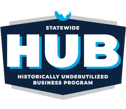Are hazardous drug protocols documented and accessible in your facility? Seems like a no-brainer, especially considering all of the other potential upgrades and changes your facility may have to undertake to comply with USP <800>. But it’s among the most important pieces of the regulation because what good are policies if the healthcare workers they’re designed to protect do not know about them?
We’re continuing the series expanding on our most popular blog in 2021 - “From Our Customers: The Top 8 Questions To Expect In Joint Commission Inspections.” This time we’ll talk through the Joint Commission’s expectations regarding the documentation and accessibility of drug protocols.
While USP <800> covers many aspects of safely handling and disposing of hazardous drugs, the documentation and communication of your facility’s specific protocols is the bow that wraps up all of the work to protect healthcare workers from hazardous drug exposure. If you’ve upgraded equipment, invested in the required PPE, but have not created policies on labeling, transport, storage, and made Safety Data Sheets (SDS) easily accessible for every hazardous drug administered in your facility as stated in Section 8 of USP <800>, then you’re missing a key USP <800> component.
So, you can have all of the policies in place and still get reprimanded by the Joint Commission or State Board of Pharmacy IF those policies are not adequately documented and accessible to ALL healthcare workers who come into contact with hazardous drugs.
USP <800> outlines a list of hazardous drug handling and disposal activities that require SOPs. The list of required SOPs provides a checklist of sorts for USP <800> requirements. Are all of your SOPs in place and documented?
- Hazard communication program
- Occupational safety program
- Designation of HD areas
- Receipt
- Storage
- Compounding
- Use and maintenance of proper engineering controls (e.g., C-PECs, C-SECs, and CSTDs)
- Hand hygiene and use of PPE based on activity (e.g., receipt, transport, compounding, administration, spill, and disposal)
- Deactivation, decontamination, cleaning, and disinfection
- Dispensing
- Transport
- Administering
- Environmental monitoring (e.g., wipe sampling)
- Disposal
- Spill control
- Medical surveillance
- Training of personnel who transport, compound, or administer HDs
What does accessibility look like for SOPs? Where is the best place for your organization to store these vital policies to not only meet compliance but also to provide healthcare workers with the information they need to protect themselves?
There is no clear requirement for how the policies are documented or where the policies must be communicated. Hospitals vary in the way they ensure policies and procedures are accessed - spreadsheets, the intranet, SharePoint, and cloud-based medication safety platforms.
Did you know that among our customers we found that SOPs are twice as likely to be accessed when they are available directly at the point of care vs. in a spreadsheet on the intranet? This means nurses and clinicians are more likely to take the steps necessary to protect themselves like using the correct PPE adequately when it takes less time and effort to locate medication safety information.
In addition to SOPs, there are other documents required by the USP <800>:
Assessment of Risk (AoR)
AoRs are not required for all hazardous drugs but must be considered for antineoplastics, non-antineoplastics, and reproductive hazardous agents that utilize alternative containment strategies and work practices. AoRs must be reviewed and updated every 12 months.
Acknowledgment of Risks
Personnel who handle or in some way interact with hazardous drugs must be trained on safe handling and disposal of hazardous drugs. They also must acknowledge in writing that they understand the risks of hazardous drug exposure.
What if all of these documents were accessible anywhere and everywhere healthcare workers are within a facility? Cloud-based medication safety platforms like Rpharmy’s Rhazdrugs enable healthcare workers to quickly and simply locate the medication safety information that can prevent hazardous drug exposure and potentially negative health effects. Rhazdrugs also makes it easy to demonstrate compliance with the USP <800> documentation requirements.
Here’s a quick video to learn more about how Rhazdrugs can keep your healthcare workers safe while making easy work out of USP <800> documentation compliance requirements.


